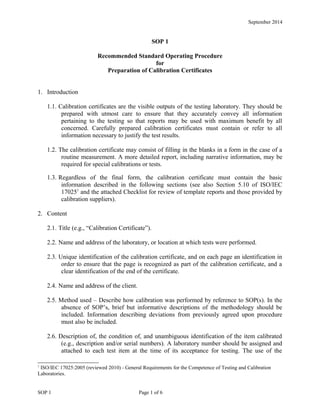This document provides recommendations for the standard operating procedure for preparing calibration certificates. Calibration certificates should contain specific essential information, including: the title, laboratory information, unique identification, client information, test methods used, item description and identification, dates, test results, signatures, and statements regarding the applicability and reproducibility of the results. Proper documentation ensures calibration certificates accurately convey test information and can be properly used and referenced. Sample calibration certificates and checklists are provided as examples to ensure certificates meet these guidelines.






